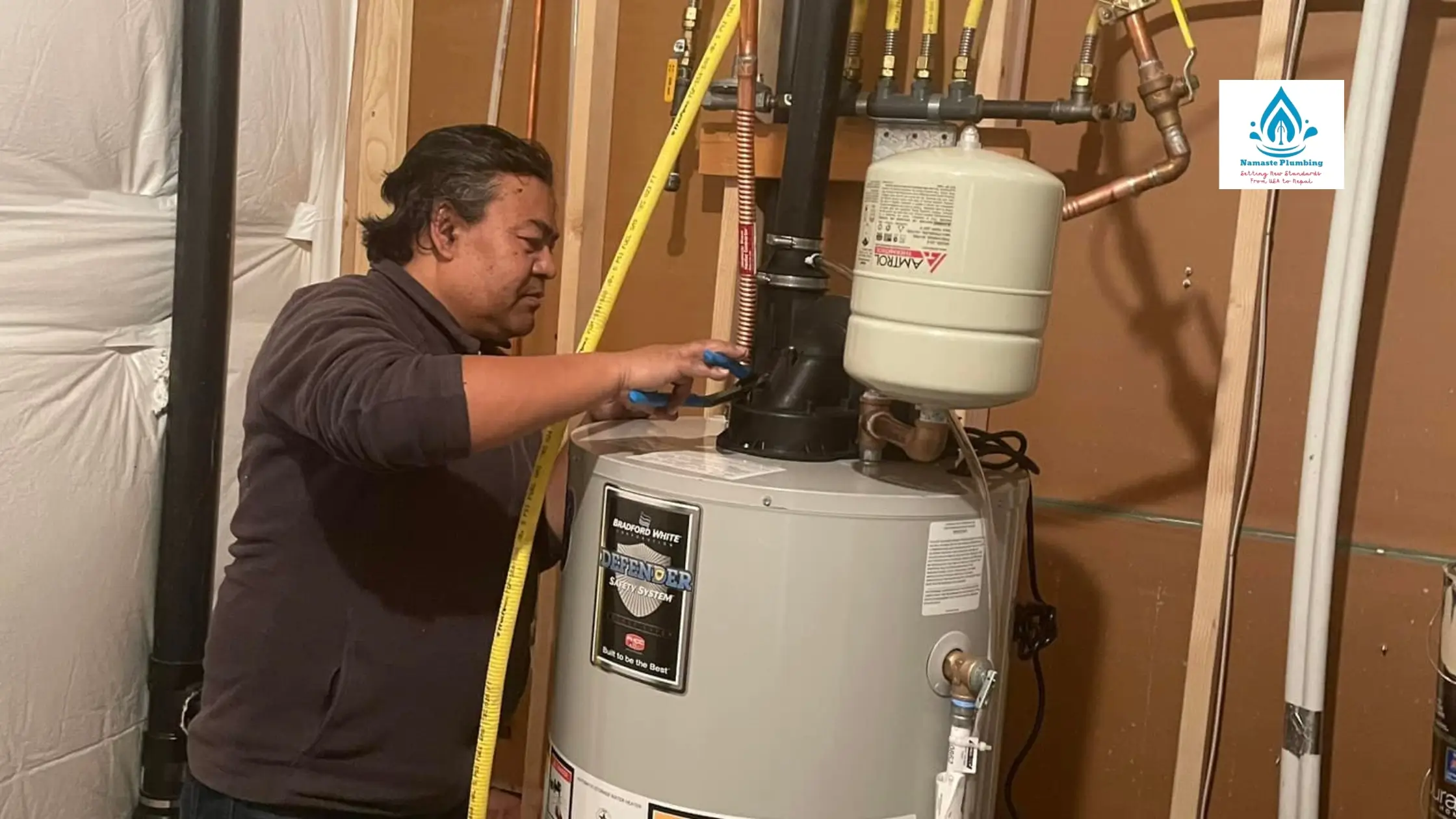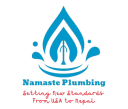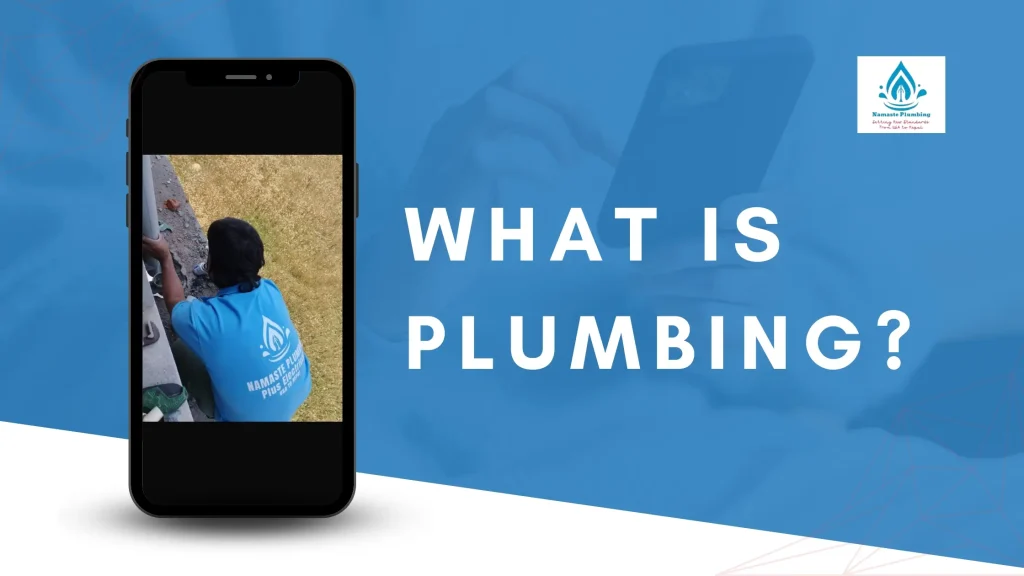Plumbing is the network of pipes, valves, fixtures, and appliances that bring clean water into your home and safely remove wastewater. It is one of those things people often take for granted until there is a problem.
Whether it is turning on the tap, flushing the toilet, or running the shower, plumbing makes daily life possible. Beyond convenience, it protects your health by providing clean water and removing waste safely.
What are the Components of a Plumbing System?
A plumbing system is made up of key components including the water supply, drainage system, vents, fixtures, valves, and pipes. Together, these components ensure that pure water enters your home and wastewater is safely evacuated, keeping your living environment healthy and comfortable.
Water Supply System
This is where water enters your home. In Nepal, water may come from the municipal supply, borewells, or natural springs. Since water supply can be inconsistent—especially in cities like Kathmandu—many homes use overhead tanks to store water when it’s available.
Booster pumps are often installed to maintain steady water pressure. Some households also collect rainwater for activities like gardening or cleaning, helping reduce the demand on local water sources.
Drainage and Waste System
Once you have used the water, it needs to be safely taken away. The drainage system directs wastewater from sinks, toilets, and showers to either the municipal sewer or a septic tank.
A well-designed drainage system keeps your home dry, avoids unpleasant smells, and prevents health risks. In Nepal, the National Building Code (NBC 208) sets the standards to ensure drainage systems are safe and effective.
Vent System
Vents in plumbing allow air to enter the drainage pipes. This prevents pressure from building up and helps wastewater flow smoothly. If vents are missing or not properly installed, you might hear strange gurgling noises or smell sewer gases inside your home. Even though vents are small, they are very important for a healthy plumbing system.
Fixtures and Appliances
Fixtures include everyday devices like toilets, sinks, showers, and bathtubs. Plumbing also connects to appliances such as water heaters; solar and electric types are quite popular in Nepal, washing machines, and water purifiers. Proper installation of these fixtures and appliances ensures they work well without leaks or pressure problems.
Valves and Pipes
Pipes carry clean water into your home and waste out of it. In Nepal, common pipe materials include PVC for cold water and drainage, PPR or copper for hot water lines, and galvanized iron in older buildings.
Valves such as ball valves, gate valves, and check valves control the flow of water and allow you to isolate parts of the system for repairs. Backflow prevention devices are crucial because they stop dirty water from flowing back into clean water pipes, keeping your water safe and healthy.
Recommended Read: How to Choose the best Plumbing Services in Kathmandu?
How Does Plumbing Work?

Plumbing works by moving clean water into your home and carrying wastewater out through a well-designed system of pipes and fixtures. Water usually comes from a main source like a municipal supply, a borewell, or a storage tank. It may pass through pumps or tanks to maintain pressure and then travels through pipes to your taps, showers, and appliances.
When you use water, the wastewater flows out through drains connected to your fixtures. Traps under sinks and toilets hold water to block sewer gases from entering your home. From there, wastewater moves through drainpipes into the municipal sewer system or a septic tank. Proper pipe sizes, correct slopes, and ventilation pipes are essential to ensure water and waste flow smoothly, prevent clogs, and keep unpleasant odors out of your living spaces.
Recommended: Plumbing Service in Nepal
Why Plumbing Matters?
Good plumbing safeguards health by preventing contamination, provides safe water for drinking and cooking, and adds comfort through hot water and convenient fixtures. Because of Nepal’s unpredictable water supply, plumbing must effectively control pressure and storage to optimize availability while minimizing waste.
Common Plumbing Issues
Plumbing problems can quickly disrupt your daily routine and lead to costly repairs if not addressed promptly. Beyond common issues like leaks, clogs, and low water pressure, homeowners may encounter several other challenges.
- Leaks often begin small, from worn joints or washers. Even minor leaks can cause water damage, mold growth, and higher water bills if left unattended.
- Clogs occur when grease, hair, or debris accumulate in your pipes, slowing down water flow. Regular cleaning and careful disposal of waste can prevent most blockages.
- Low water pressure can make showers and taps frustrating. It usually happens due to mineral buildup, partially closed valves, or issues with pumps and tanks. Identifying the cause often requires a professional inspection.
- Burst pipes can occur from freezing temperatures or high water pressure, leading to significant water damage in your home.
- Running toilets waste water continuously and can noticeably increase your water bills. Fixing the internal mechanisms or replacing parts usually resolves this.
- Water heater problems may include inconsistent hot water, strange noises, or leaks. Regular maintenance helps, but some issues require professional plumber.
- Dripping faucets are more than just annoying—they waste water and energy. Worn-out washers or faulty valves are usually the culprits.
- Blockages or breakdowns in sewer lines can cause major backups and health risks. These require immediate medical intervention.
- Slow drains may indicate possible pipe damage or partial blockages. This problem can be avoided by employing strainers and keeping drains clean.
- When protection measures malfunction, tainted water can return to your clean water supply, creating a major health concern. This is known as backflow.
Types of Plumbing Services
Plumbing services cover a wide range of needs for homes, businesses, and industrial setups.
- Residential Plumbing
Fixing leaks, clearing clogged drains, and installing fixtures like faucets and toilets to maintain smooth water flow for everyday use are all part of this service, which concentrates on houses and small structures. - Commercial Plumbing
Designed for larger and more complex systems in offices, schools, shops, and restaurants, commercial plumbing requires specialized designs to handle higher water usage while meeting strict building codes. - Emergency Plumbing
Emergency plumbers respond quickly to urgent problems like burst pipes or severe leaks. They work around the clock to stop damage and restore plumbing as fast as possible.
Other specialized services include:
- Industrial Plumbing
Heavy-duty pipes and complex waste management systems are features of industrial plumbing, which is designed for factories and other big buildings to meet the rigorous requirements of industrial operations. - Maintenance Plumbing
Regular inspections and small repairs help prevent major issues and costly emergencies. - Renovation and Remodeling Plumbing
When buildings are renovated, plumbing may need moving or upgrading to fit new layouts and current codes. - Green Plumbing
Focuses on eco-friendly solutions such as water-saving fixtures, solar heaters, and rainwater harvesting to conserve resources. - New Construction Plumbing
Involves installing plumbing systems from scratch in new buildings, following design plans and regulations.
Namaste Plumbing can assist you if you require dependable and experienced plumbing services in Nepal. Whether it’s a minor repair or a major installation, our expert crew guarantees quality workmanship and timely service.
What Is Rough-In Plumbing?
Rough-in plumbing is the first step in setting up a building’s plumbing system. During this phase, all the pipes, drains, and vents are put in place inside the walls and floors before any sinks, toilets, or showers are installed. Getting this part right is really important because it makes sure everything works smoothly later and saves you from having to break walls or tiles to fix leaks or add pipes.
History & Sustainability of Plumbing
Plumbing has an interesting history dating back thousands of years. Ancient civilizations first developed basic water systems out of materials like clay and lead. The Romans, for example, built enormous aqueducts and lead pipes to bring fresh water to their towns while efficiently managing wastewater. Plumbing has progressed throughout time, and today’s materials include copper, PVC, and PEX pipes, which are safer, more durable, and efficient.
In Nepal, sustainable plumbing practices are gaining favor. Many homes and businesses are already using rainwater collection to reduce their reliance on municipal water supply. Utilizing the nation’s plentiful sunshine, solar water heaters are growing in popularity as a way to reduce electricity costs. In order to preserve this essential resource, water-saving fixtures and appliances are very commonly used.
These eco-friendly methods not only protect the environment, but also help households and businesses save money on water and energy costs, all while encouraging responsible, sustainable resource use.
Codes & Best Practice in Nepal
In Nepal, plumbing is guided by the National Building Code (NBC) 208 to ensure safe water supply, proper wastewater disposal, and overall plumbing safety in homes and buildings.
- Water Supply: The code recommends at least 100 liters per person per day to cover daily needs like drinking, cooking, and cleaning.
- Wastewater Disposal: Sewage must be safely collected and treated to prevent leaks, blockages, and contamination of drinking water.
- Rainwater Harvesting: Capturing rainwater helps reduce pressure on municipal supplies and supports groundwater recharge, which is especially important in cities like Kathmandu.
- Local Regulations: Municipalities often add their own rules. For example, Kathmandu requires septic tanks and rainwater harvesting systems to be installed in new homes to improve sanitation and water self-sufficiency.
Why Compliance Matters:
- Safety: Proper plumbing prevents damage and leaks in your house.
- Health: It prevents waterborne infections and upholds hygiene
- Efficiency: Helps to cut down water waste
- Sustainability: Encourages resource conservation and eco-friendly lifestyle
Many households in Kathmandu are already adopting these practices to manage water wisely. For plumbing that meets all safety and efficiency standards, Namaste Plumbing offers expert services you can trust, keeping your home safe and running smoothly.
Why Namaste Plumbing is the Best Choice for Your Plumbing Services?
Namaste Plumbing is the first and only Nepal-based plumbing company with USA-level expertise, awards recognition, bringing world-class service to local homes and businesses. With years of experience handling all kinds of plumbing needs, Namaste Plumbing understands the challenges Nepali homes and offices face, from inconsistent water supply to aging pipes and the importance of following national codes.
- Fast, reliable, and guaranteed plumbing services
- 24/7 emergency support for urgent repairs
- Use of international-standard tools and high-quality materials
- Highly trained and certified plumbers
- Installations that comply with national standards like NBC 208
- Durable and efficient solutions built to last
- Transparent pricing and timely responses
Namaste Plumbing combines cutting-edge techniques with local experience to maintain your plumbing in top shape, whether it’s repairing a little leak, renovating a bathroom, or dealing with an emergency plumbing problem.
Final Thoughts
The foundation of a cozy and healthy home is the plumbing. A well-thought-out system and expert service are important whether you’re fixing a leak or organizing a new installation.
Get in touch with Namaste Plumbing right now for skilled plumbing solutions catered to Nepal’s particular requirements. Allow our knowledgeable staff to keep your house or place of business stress-free, effective, and safe.
Questions related Plumbing
How much does it cost to hire a plumber in Kathmandu?
Depending on the service, plumbing prices in Kathmandu can vary. Compared to emergency repairs or complete installations, routine maintenance is typically less expensive. Namaste Plumbing provides clear, job-specific pricing.
Can plumbing issues cause health problems?
Indeed, mold development, bacterial contamination, or waterborne illnesses can result from issues like leaks, clogged drains, or tainted water. These dangers are avoided by routine maintenance and inspections.
How often should I inspect my plumbing system?
It is recommended to have your plumbing system inspected at least once a year. Regular checks for leaks, corrosion, and water pressure help catch potential problems early, preventing costly repairs and ensuring your system runs smoothly.
Are there eco-friendly plumbing solutions available in Nepal?
Yes, there are choices like solar water heaters, water-efficient fixtures, and rainwater harvesting. Namaste Plumbing assists with the installation of energy and water-saving sustainable technologies.
What should I do during a plumbing emergency at home?
Turn off the main water supply, avoid using damaged fixtures, and call a professional plumber immediately. Namaste Plumbing offers 24/7 emergency services across Nepal.
Can old pipes affect water quality?
Yes, aging pipes, especially galvanized iron or corroded pipes, can cause rust, discoloration, or even contamination in drinking water. Upgrading to modern materials like PVC, PPR, or copper is recommended.
How do I know if my water heater needs repair or replacement?
Signs include inconsistent hot water, strange noises, leaks, or corrosion around the tank. Regular maintenance can extend its life, but Namaste Plumbing can advise when replacement is the safer option.

